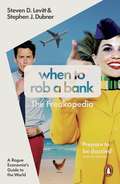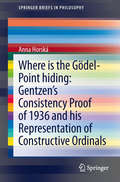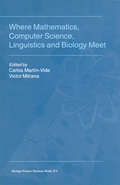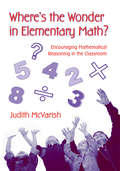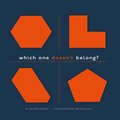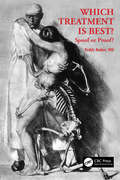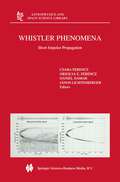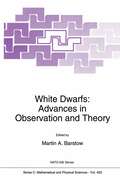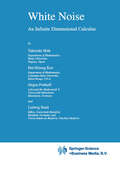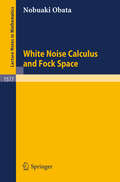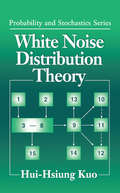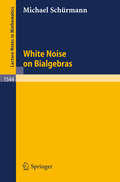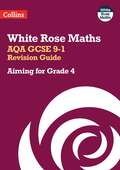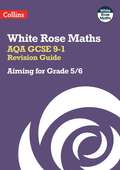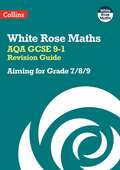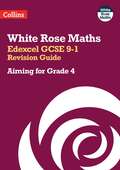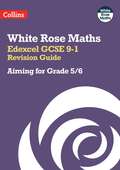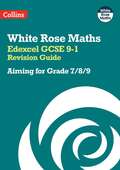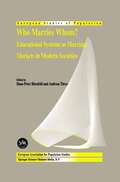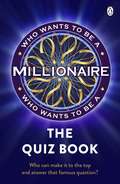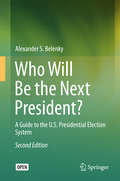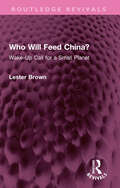- Table View
- List View
When to Rob a Bank: A Rogue Economist's Guide to the World
by Steven D. Levitt Stephen J. DubnerWhy don't flight attendants get tipped? If you were a terrorist, how would you attack? And why does KFC always run out of fried chicken? Over the past decade, Steven D. Levitt and Stephen J. Dubner have published more than 8,000 blog posts on Freakonomics.com. Now the very best of this writing has been carefully curated into one volume, the perfect solution for the millions of readers who love all things Freakonomics.Discover why taller people tend to make more money; why it's so hard to predict the Kentucky Derby winner; and why it might be time for a sex tax (if not a fat tax). You'll also learn a great deal about Levitt and Dubner's own quirks and passions. Surprising and erudite, eloquent and witty, Freaks and Friends demonstrates the brilliance that has made their books an international sensation.
Where is the Gödel-point hiding: Gentzen's Consistency Proof Of 1936 And His Representation Of Constructive Ordinals (SpringerBriefs in Philosophy)
by Anna HorskáThis book explains the first published consistency proof of PA. It contains the original Gentzen's proof, but it uses modern terminology and examples to illustrate the essential notions. The author comments on Gentzen's steps which are supplemented with exact calculations and parts of formal derivations. A notable aspect of the proof is the representation of ordinal numbers that was developed by Gentzen. This representation is analysed and connection to set-theoretical representation is found, namely an algorithm for translating Gentzen's notation into Cantor normal form. The topic should interest researchers and students who work on proof theory, history of proof theory or Hilbert's program and who do not mind reading mathematical texts.
Where Mathematics, Computer Science, Linguistics and Biology Meet: Essays in honour of Gheorghe Păun
by Carlos Martín-Vide V. MitranaIn the last years, it was observed an increasing interest of computer scientists in the structure of biological molecules and the way how they can be manipulated in vitro in order to define theoretical models of computation based on genetic engineering tools. Along the same lines, a parallel interest is growing regarding the process of evolution of living organisms. Much of the current data for genomes are expressed in the form of maps which are now becoming available and permit the study of the evolution of organisms at the scale of genome for the first time. On the other hand, there is an active trend nowadays throughout the field of computational biology toward abstracted, hierarchical views of biological sequences, which is very much in the spirit of computational linguistics. In the last decades, results and methods in the field of formal language theory that might be applied to the description of biological sequences were pointed out.
Where's the Wonder in Elementary Math?: Encouraging Mathematical Reasoning in the Classroom
by Judith McVarishThis book argues that even in today's high-stakes testing environment, 'teaching to the test' need not be teachers’ only focus as they introduce young children to mathematics. Judith McVarish demonstrates how building a community of learners and using problem solving to engage students can help teachers encourage students’ disposition to creative thinking and reasoning—skills that can otherwise become lost due to the pressure of the many other expectations placed upon both teachers and students. This book offers strategies for infusing mathematics learning and reasoning into elementary school classrooms while meeting curriculum and testing mandates. The teacher researcher component of each chapter provides a vehicle for teachers to bring their own expertise and questions back into the teaching and learning equation.
Where's the Wonder in Elementary Math?: Encouraging Mathematical Reasoning in the Classroom
by Judith McVarishThis book argues that even in today's high-stakes testing environment, 'teaching to the test' need not be teachers’ only focus as they introduce young children to mathematics. Judith McVarish demonstrates how building a community of learners and using problem solving to engage students can help teachers encourage students’ disposition to creative thinking and reasoning—skills that can otherwise become lost due to the pressure of the many other expectations placed upon both teachers and students. This book offers strategies for infusing mathematics learning and reasoning into elementary school classrooms while meeting curriculum and testing mandates. The teacher researcher component of each chapter provides a vehicle for teachers to bring their own expertise and questions back into the teaching and learning equation.
Which One Doesn't Belong?: A Shapes Book
by Christopher DanielsonWhich One Doesn't Belong? has won the Mathical Book Prize , which will be presented to Christopher Danielson at the National Math Festival in Washington, DC on April 22, 2017. The Mathical Book Prize is an annual award for fiction and nonfiction books that inspire children of all ages to see math in the world around them. Every colorful page of Christopher Danielson's children's picture book, Which One Doesn't Belong?, contains a thoughtfully designed set of four shapes. Each of the shapes can be a correct answer to the question Which one doesn't belong?- Because all their answers are right answers, students naturally shift their focus to justifications and arguments based on the shapes' geometric properties. In the companion teacher's guide,(978-1-62531-081-1) Danielson shows how to facilitate rich discussions and teach mathematical argumentation using Which One Doesn't Belong? He models how to listen closely and respectfully to students' ideas about shapes. Danielson synthesizes research about how children learn geometry, discusses the role of geometry in the mathematics curriculum, and gives plenty of practical advice about different ways to implement Which One Doesn't Belong? in classrooms. He also discusses the mathematical ideas likely to emerge on each page and-;drawing from his direct experience using Which One Doesn't Belong? at several different grade levels-;helps teachers anticipate and think about students' likely answers. Most curricula treat geometry as little more than vocabulary lessons. Which One Doesn't Belong? and its accompanying guide are powerful, flexible resources teachers can use to provoke lively discussions and deep learning about shapes with students of all ages.
Which Treatment Is Best? Spoof or Proof?
by Teddy BaderA young woman cries, "Please don’t let me die!" Has she received the best treatment? What is the best treatment? How do we know? Life-threatening disease prompts these questions in everyone. Which Treatment Is Best? Spoof or Proof? explains the best scientific evidence for any treatment—the randomized controlled trial. This book begins with rotten humors as the source of all diseases. The reader is guided through serious attempts in history to treat disease, but which now seem amusing. The story ends with the randomized controlled trial and how to interpret it. The text will help students and clinicians understand this universal language of clinical research worldwide. Key Features Describes the development of the randomized, controlled trial as the gold standard of proof Unravels the meaning of "randomized," "double-blind," and "p-values" in a simplified manner for students and clinicians Contains timeless information on how medical evidence can be understood
Which Treatment Is Best? Spoof or Proof?
by Teddy BaderA young woman cries, "Please don’t let me die!" Has she received the best treatment? What is the best treatment? How do we know? Life-threatening disease prompts these questions in everyone. Which Treatment Is Best? Spoof or Proof? explains the best scientific evidence for any treatment—the randomized controlled trial. This book begins with rotten humors as the source of all diseases. The reader is guided through serious attempts in history to treat disease, but which now seem amusing. The story ends with the randomized controlled trial and how to interpret it. The text will help students and clinicians understand this universal language of clinical research worldwide. Key Features Describes the development of the randomized, controlled trial as the gold standard of proof Unravels the meaning of "randomized," "double-blind," and "p-values" in a simplified manner for students and clinicians Contains timeless information on how medical evidence can be understood
Whistler Phenomena: Short Impulse Propagation (Astrophysics and Space Science Library #262)
by C. Ferencz O. Ferencz D. Hamar J. LichtenbergerIn this volume, the authors present theoretical explanations for a few basic problems connected with the propagation of extra wide band, short impulses in linear media, and with the propagation of whistlers and megawhistlers in plasmas. In addition, the book provides an overview of ground and space based measurements, digital processing and signal analysis. The theoretical treatment in this volume is original in the sense that, unlike former solutions, the authors present a fundamentally non-monochromatic approach. A key feature of this approach is the application of the `Laplace Transformation' and the `Method of Inhomogeneous Basic Modes' to solve Maxwell's equations. It is shown that when the obtained theoretical results are applied to digital recordings, the wave analysis process becomes so flexible that it can also be used to investigate other wave propagation problems. These are both terrestrial phenomena (like atmospheric and seismic activity, buried target detection, etc.) and phenomena in space (planetary, interplanetary, plasmaspheric, whistler and megawhistler propagation). The book is aimed at a technical and professional audience working on whistler science and/or wave propagation problems.
White Dwarfs: Advances in Observation and Theory (Nato Science Series C: #403)
by M. A. BarstowThe European Workshop on White Dwarfs was initiated by Prof. V. Weidemann, with the first meeting held in Kiel (FRG) in 1974. Since then a similar workshop has been held almost every two years: Frascati (1976), Tel Aviv (1978), Paris (1981), Kiel (1984), Frascati (1986) and Toulouse (1990). Two major IAU colloquia have also been devoted to the study of white dwarfs (No. 53, Rochester NY, 1979; No. 114, Hanover, NH, 1988). Our most recent meeting, the 8th Workshop, marks a number of important advances in both observational and theoretical studies of white dwarfs. This coincides with a significant expansion in the size of the community active in the field, as was clear from an increase in the number of participants between this workshop (77) and that in Toulouse (46), just two years ago. Key parts of any workshop are the discussion sessions following the pa pers. However, these are difficult to record and, very often, the 'live' flavour of the debates is lost. During this workshop we carried out an experiment, recording the discussion sessions on video tape and then transcribing these later for the proceedings. Although the recordings were made in non-studio conditions with regard to lighting and noise, only a very small part was unin telligible. All participants were given an opportunity to check their questions and answers for scientific accuracy and to correct any errors arising in the transcription process.
White Noise: An Infinite Dimensional Calculus (Mathematics and Its Applications #253)
by Takeyuki Hida Hui-Hsiung Kuo Jürgen Potthoff L. StreitMany areas of applied mathematics call for an efficient calculus in infinite dimensions. This is most apparent in quantum physics and in all disciplines of science which describe natural phenomena by equations involving stochasticity. With this monograph we intend to provide a framework for analysis in infinite dimensions which is flexible enough to be applicable in many areas, and which on the other hand is intuitive and efficient. Whether or not we achieved our aim must be left to the judgment of the reader. This book treats the theory and applications of analysis and functional analysis in infinite dimensions based on white noise. By white noise we mean the generalized Gaussian process which is (informally) given by the time derivative of the Wiener process, i.e., by the velocity of Brownian mdtion. Therefore, in essence we present analysis on a Gaussian space, and applications to various areas of sClence. Calculus, analysis, and functional analysis in infinite dimensions (or dimension-free formulations of these parts of classical mathematics) have a long history. Early examples can be found in the works of Dirichlet, Euler, Hamilton, Lagrange, and Riemann on variational problems. At the beginning of this century, Frechet, Gateaux and Volterra made essential contributions to the calculus of functions over infinite dimensional spaces. The important and inspiring work of Wiener and Levy followed during the first half of this century. Moreover, the articles and books of Wiener and Levy had a view towards probability theory.
White Noise Calculus and Fock Space (Lecture Notes in Mathematics #1577)
by Nobuaki ObataWhite Noise Calculus is a distribution theory on Gaussian space, proposed by T. Hida in 1975. This approach enables us to use pointwise defined creation and annihilation operators as well as the well-established theory of nuclear space.This self-contained monograph presents, for the first time, a systematic introduction to operator theory on fock space by means of white noise calculus. The goal is a comprehensive account of general expansion theory of Fock space operators and its applications. In particular,first order differential operators, Laplacians, rotation group, Fourier transform and their interrelations are discussed in detail w.r.t. harmonic analysis on Gaussian space. The mathematical formalism used here is based on distribution theory and functional analysis , prior knowledge of white noise calculus is not required.
White Noise Distribution Theory (Probability and Stochastics Series)
by Hui-Hsiung KuoLearn the basics of white noise theory with White Noise Distribution Theory. This book covers the mathematical foundation and key applications of white noise theory without requiring advanced knowledge in this area. This instructive text specifically focuses on relevant application topics such as integral kernel operators, Fourier transforms, Laplacian operators, white noise integration, Feynman integrals, and positive generalized functions. Extremely well-written by one of the field's leading researchers, White Noise Distribution Theory is destined to become the definitive introductory resource on this challenging topic.
White Noise Distribution Theory (Probability and Stochastics Series)
by Hui-Hsiung KuoLearn the basics of white noise theory with White Noise Distribution Theory. This book covers the mathematical foundation and key applications of white noise theory without requiring advanced knowledge in this area. This instructive text specifically focuses on relevant application topics such as integral kernel operators, Fourier transforms, Laplacian operators, white noise integration, Feynman integrals, and positive generalized functions. Extremely well-written by one of the field's leading researchers, White Noise Distribution Theory is destined to become the definitive introductory resource on this challenging topic.
White Noise on Bialgebras (Lecture Notes in Mathematics #1544)
by Michael SchürmannStochastic processes with independent increments on a group are generalized to the concept of "white noise" on a Hopf algebra or bialgebra. The main purpose of the book is the characterization of these processes as solutions of quantum stochastic differential equations in the sense of R.L. Hudsonand K.R. Parthasarathy. The notes are a contribution to quantum probability but they are also related to classical probability, quantum groups, and operator algebras. The Az ma martingales appear as examples of white noise on a Hopf algebra which is a deformation of the Heisenberg group. The book will be of interest to probabilists and quantum probabilists. Specialists in algebraic structures who are curious about the role of their concepts in probablility theory as well as quantum theory may find the book interesting. The reader should havesome knowledge of functional analysis, operator algebras, and probability theory.
Who Marries Whom?: Educational Systems as Marriage Markets in Modern Societies (European Studies of Population #12)
by Hans-Peter Blossfeld Andreas TimmMarriage and social inequality are closely interrelated. Marriage is dependent on the structure of marriage markets, and marriage patterns have consequences for social inequality. This book demonstrates that in most modern societies the educa tional system has become an increasingly important marriage market, particularly for those who are highly qualified. Educational expansion in general and the rising educational participation of women in particular unintentionally have increased the rate of "assortative meeting" and assortative mating across birth cohorts. Rising educational homogamy means that social inequality is further enhanced through marriage because better (and worse) educated single men and women pool their economic and sociocultural advantages (and disadvantages) within couples. In this book we study the changing role of the educational system as a marriage market in modern societies from a cross-national comparative perspective. Using life-history data from a broad range of industrialized countries and longitudinal statistical models, we analyze the process of spouse selection in the life courses of single men and women, step by step. The countries included in this book vary widely in important characteristics such as demographic behavior and institutional characteristics. The life course approach explicitly recognizes the dynamic nature of partner decisions, the importance of educational roles and institutional circum stances as young men and women move through their life paths, and the cumulation of advantages and disadvantages experienced by individuals.
Who Wants to be a Millionaire - The Quiz Book
by UnknownTwenty years after it last aired, Who Wants to be a Millionaire burst back onto our screens for a week of shows this spring. A record 6 million viewers were shouting at the TV as contestants took on the new host, lifelines and questions. A second mini-series will air in November to celebrate the show's anniversary and this is the ultimate quiz-book for readers to take on the challenge at home. The perfect stocking filler for this Christmas, this interactive book is packed with a thousand questions that everyone can have a go at, from £100 answers that everyone should know, to the formidable £1,000,000 question. But it's a game of skill, too: should you save your lifelines? who do you ask on phone a friend? when do you set your safety line?The real question is, can anyone play a perfect game and make it to the top?
Who Will Be the Next President?: A Guide to the U.S. Presidential Election System (SpringerBriefs in Law)
by Alexander S. BelenkyThis book is open access under a CC BY 4.0 license.This book addresses the peculiarities of the current presidential election system not yet addressed in other publications. It argues that any rules for electing a President that may have a chance to replace the current ones should provide an equal representation of states as equal members of the Union, and of the nation as a whole. This book analyzes the National Popular Vote plan and shows that this plan may violate the Supreme Court decisions on the equality of votes cast in statewide popular elections held to choose state electors. That is, the National Popular Vote plan may violate the Equal Protection Clause of the Fourteenth Amendment. The book proposes a new election system in which the will of the states and the will of the nation as a whole are determined by direct popular elections for President and Vice President in the 50 states and in D.C. This system a) would elect President a candidate who is the choice of both the nation as a whole and of the states as equal members of the Union, b) would let the current system elect a President only if the nation as a whole and the states as equal members of the Union fail to agree on a common candidate, and c) would encourage the candidates to campaign nationwide. The second edition has been updated to include a proposal on how to make established non-major party presidential candidates and independent candidates welcome participants in national televised presidential debates with the major-party candidates.
Who Will Feed China?: Wake-Up Call for a Small Planet (Routledge Revivals)
by Lester BrownOriginally published in 1995, but with enduring relevance in a time of global population growth and food insecurity, when it was first published, this book attracted much global attention, and criticism from Beijing. It argued that even as water becomes scarcer in a land where 80% of the grain crop is irrigated, as per-acre yield gains are erased by the loss of agricultural land to industrialization, and as food production stagnates, China still increases its population by the equivalent of a new Beijing each year. This book predicts that in an integrated world economy, China’s rising food prices will become the world’s rising food prices. China’s land scarcity will come everyone’s land scarcity and water scarcity in China will affect the entire world. China’s dependence on massive imports, like the collapse of the world’s fisheries, will be a wake-up call that we are colliding with the earth’s capacity to feed us. Over time, Janet Larsen argued, China’s leaders came to ‘acknowledge how Who Will Feed China? changed their thinking..’ As China’s wealth increases, so do the dietary demands of its population. The increasing middle classes demand more grain-intensive meat and farmed fish. The issue of who will feed China has not gone away.
